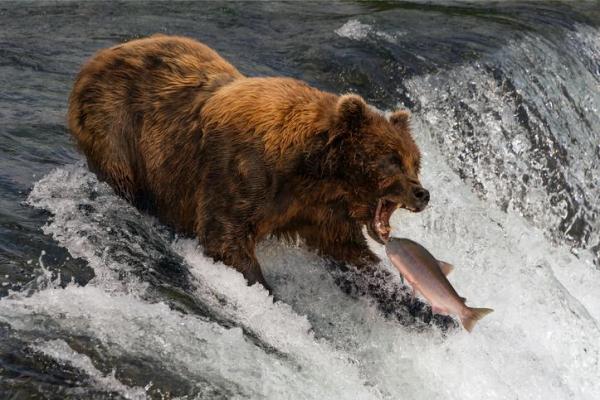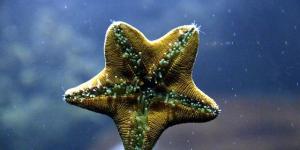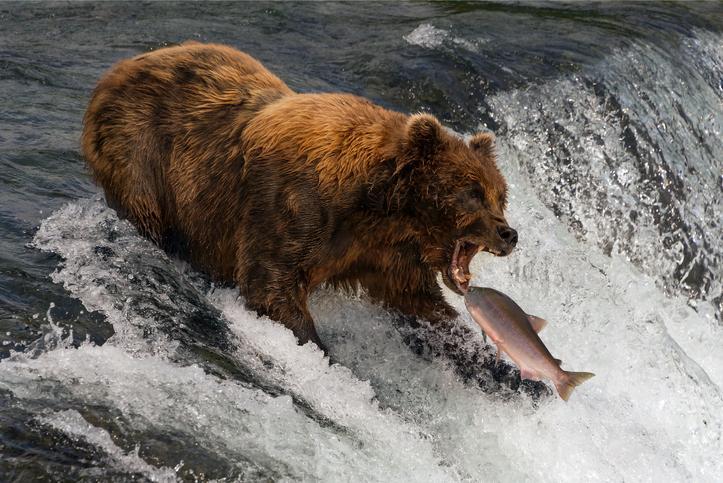What Are Predators and Their Types?


Within an ecological community, there are hundreds of different interactions between different species. These interactions are essential for maintaining balance within the community and, therefore, the ecosystem. One of the most important types of interactions is predation.Predators are animals that hunt and kill other animals for food. They play a vital role in ecosystems by controlling prey populations, promoting biodiversity, and keeping habitats clean.
The following AnimalWised article explores predation, its different types, and its ecological importance.
What is predation?
Predation is a natural phenomenon that transcends boundaries within the animal kingdom. It is a complex ecological process in which one organism hunts, kills, and consumes another. Predators play a vital role in shaping the dynamics of ecosystems by regulating prey populations and maintaining biodiversity.
Predation is an energy-intensive process for both the predator and the prey. It is a relentless pursuit that sustains the predator's vital functions but results in the demise of the prey. This intricate dance of life unfolds on two critical ecological stages: the individual and the community.
At the individual level, predation can have a devastating impact on the prey, abruptly deteriorating its physical state and curtailing its prospects of future reproduction.
Simultaneously, at the community level, predation acts as a regulator by reducing the population of prey animals, thus shaping the dynamics of the ecosystem.
Predation encompasses a wide spectrum of interactions, from the classic carnivorous pursuits to the subtle seed predation and even the unconventional tactics of carnivorous plants. While we often envision predation as one animal capturing another, such as an owl preying on mice or a fox chasing down a rabbit, there are more intricate scenarios.
For instance, group predation involves multiple predators working together to target larger prey, like a pack of wolves hunting a deer or a pod of orcas pursuing a massive whale. This cooperative hunting strategy is prevalent not only in mammals but also among social insects like ants, wasps, and even certain spiders.
Even seeds, seemingly inert life forms, are not immune to predation. Seed predation plays a crucial role in regulating plant populations and shaping plant communities. Seed predators include a wide range of organisms, from birds and rodents to insects and fungi. For more information on seed predation, be sure to read this other article, where we explain in detail what is seed predation in birds.
Carnivorous plants, like the Venus flytrap, reveal another interesting aspect of predation within the plant kingdom. They consume insects as a source of nitrogen, which can be in short supply in their native soil.

Types of predators
Predatory animals come in diverse forms, each with its unique way of hunting and capturing prey. Understanding these categories sheds light on the complexity of nature's food web and the vital roles that predators play in their ecosystems.
True Predators or carnivores
True predators, or carnivores, are often the apex predators in their ecosystems, meaning they have few or no natural predators themselves. These animals are specialized hunters with adaptations for capturing and consuming other animals.
Examples include lions, the cooperative hunters of the African savannah; tigers, the solitary and powerful cats of Asia; wolves, the social predators that rely on pack hunting; and sharks, the masters of the oceans with specialized teeth and senses for hunting.
Herbivores with predatory tendencies
While herbivores primarily consume plants, they occasionally display predatory behavior when consuming seeds or fruits. While their feeding habits may not lead to the death of the plant, they can cause varying degrees of damage to the plants they feed on.
Examples of herbivores with predatory tendencies include deer, which browse on shrubs and tree saplings; rabbits that consume garden vegetables; and cows known to trample and graze on crops.
Specialized predators
This category encompasses animals with unique predatory strategies, often specific to their ecological roles.
- Parasitoids: parasitoids are insects that lay their eggs inside or on other insects. As the eggs hatch, the larvae consume their host from the inside, ultimately leading to the host's death. Parasitoids play a vital role in controlling populations of insect pests, contributing to ecosystem balance.
- Parasites: parasites live on or in other animals, extracting sustenance from their hosts. While they often cause harm, they don't always lead to the host's death. Common examples include ticks, which attach themselves to mammals and birds; lice that infest the fur of mammals; and fleas that feed on the blood of various animals.
- Cannibals: cannibalism is when animals consume individuals of their own species. This behavior can be triggered by various factors, such as hunger, stress, or overpopulation. Cannibalism is observed in diverse species, including certain spiders, insects, and even some mammals.
- Scavengers: scavengers play a crucial ecological role by feeding on the carcasses of dead animals. By doing so, they help clean up ecosystems and prevent the spread of diseases. Examples of scavengers include vultures, nature's cleanup crew; hyenas, with powerful jaws to access bones; and raccoons, known for their opportunistic feeding habits. For in-depth insights into scavenger animals, don't miss our dedicated article. We explore various types of scavengers, including carrion-eaters, with illustrative examples.
- Filter feeders: filter feeders are often aquatic animals that consume small particles suspended in water. They use specialized structures to filter out tiny organisms like plankton. This feeding method is commonly seen in whales, which employ baleen plates to capture food, and some fish species that filter feed in freshwater and marine environments.
- Symbiotic predators: symbiotic predators engage in mutually beneficial relationships where one partner benefits from the predation of another. An example is cleaner fish, which remove parasites from the skin of larger fish while gaining a meal in the process. These symbiotic relationships illustrate the intricate web of interactions in aquatic ecosystems.
Understanding the various categories of predators showcases the remarkable diversity of predatory strategies and behaviors in the animal kingdom. Each category reflects the intricate and often specialized roles that predators play within their ecosystems.
While these categories generally hold true for many animals, exceptions and variations exist in the animal kingdom.
Predatory behaviors are influenced by a range of factors, including an animal's environment and evolutionary history. By understanding these diverse predator types, we gain insight into the complex interactions within the Animal Kingdom.
Predatory strategies
Predatory strategies are as diverse as the predators themselves, shaped by evolution and the need for survival. Predators have evolved a wide range of hunting techniques, feeding habits, and adaptations to their specific environments to maximize their success in capturing prey.
Hunting techniques
- Ambush predation: predators rely on stealth and patience to surprise their prey. Examples include crocodiles and certain spider species.
- Pursuit predation: predators are known for their speed and stamina in chasing prey over long distances. Includes animals like cheetahs, built for sprinting to catch prey.
- Cooperative hunting: group predation involving multiple predators targeting larger prey. Seen in wolves hunting deer and orcas chasing whales.
Feeding habits
- Carnivores: swiftly consume prey, often with specialized teeth and jaws. Lions, for instance, are carnivores.
- Scavengers: play a crucial role in cleaning up ecosystems by consuming dead animals. Vultures are classic scavengers.
- Filter feeders: sift small particles from water for sustenance. Whales, with their baleen plates, exemplify filter feeding.
- Symbiotic predators: engage in mutually beneficial predation. Cleaner fish removing parasites from larger fish is an example.
Predation strategies in different environments
Predatory strategies can vary depending on the environment in which predators live. Here is a brief exploration of how these strategies adapt to different ecosystems:
- Terrestrial predation: land-dwelling predators employ a variety of strategies, such as stalking prey through tall grass or using camouflage to blend in with their surroundings. Examples include lions in the savanna, tigers in the forest, and coyotes in the desert.
- Aquatic predation: aquatic predators have adapted to hunting and feeding underwater. Some species use their keen vision to spot prey from afar, while others rely on echolocation to navigate and track prey in murky waters. Examples include sharks in the ocean, crocodiles in rivers, and dolphins in lakes.
- Aerial predation: predators that fly, such as eagles and hawks, have unique predatory strategies. They often use their superior vantage point to spot prey from above, and they can swoop down at high speeds to deliver a killing blow. You might be interested in this other article, where we explain in more detail how do eagles hunt and their different hunting strategies.
Predatory strategies are complex and fascinating, reflecting the diversity and adaptability of predators in the natural world. By understanding the different ways that predators hunt and feed, we can gain a deeper appreciation for the intricate web of life that connects all ecosystems.
Ecological importance of predators
Predators play a vital role in maintaining healthy ecosystems. They help to control prey populations, promote biodiversity, and keep habitats clean.
- Population control: predators prevent prey species from overpopulating, which can lead to environmental damage and resource depletion. For example, if deer populations were left unchecked, they would overgraze vegetation and disrupt the balance of the ecosystem.
- Trophic cascades: predators at the top of the food chain, known as apex predators, have a cascading effect on the entire ecosystem. Their presence can lead to healthier habitats and more diverse species. For example, wolves in Yellowstone National Park help to control elk populations, which in turn allows other plants and animals to thrive.
- Habitat health: scavengers, such as vultures and hyenas, play an important role in cleaning up carcasses and preventing the spread of disease. Predators can also act as keystone species, meaning that their presence is essential to the overall health of the ecosystem. For example, sea otters help to control sea urchin populations, which prevents overgrazing of kelp forests.
Predators are vital for the stability and diversity of ecosystems. They help to keep populations in check, promote biodiversity, and maintain healthy habitats. As such, predators are a crucial focus of conservation efforts.

If you want to read similar articles to What Are Predators and Their Types?, we recommend you visit our Facts about the animal kingdom category.
- Sack, J. (2003). Predator in Ecosystems: Definition & Explanation. Study.com. Science Courses, Chapter 20, Lesson 8.
- Stevens, A. (2010). Predation, Herbivory, and Parasitism. Nature Education Knowledge, 3(10):36







